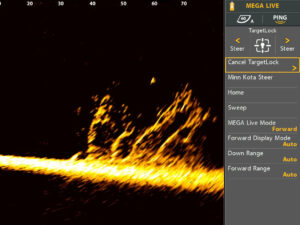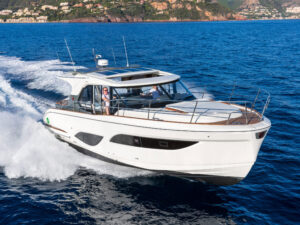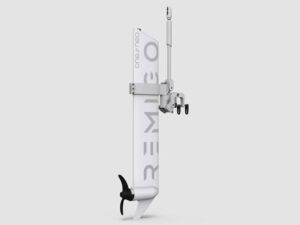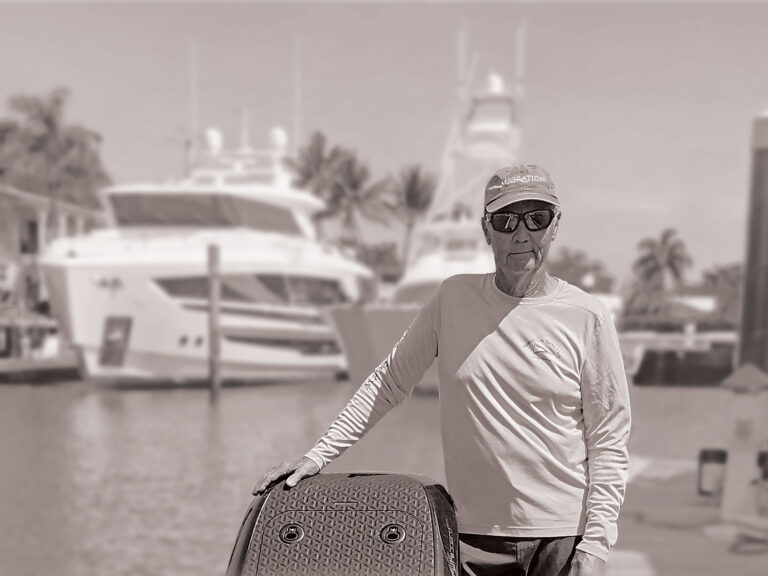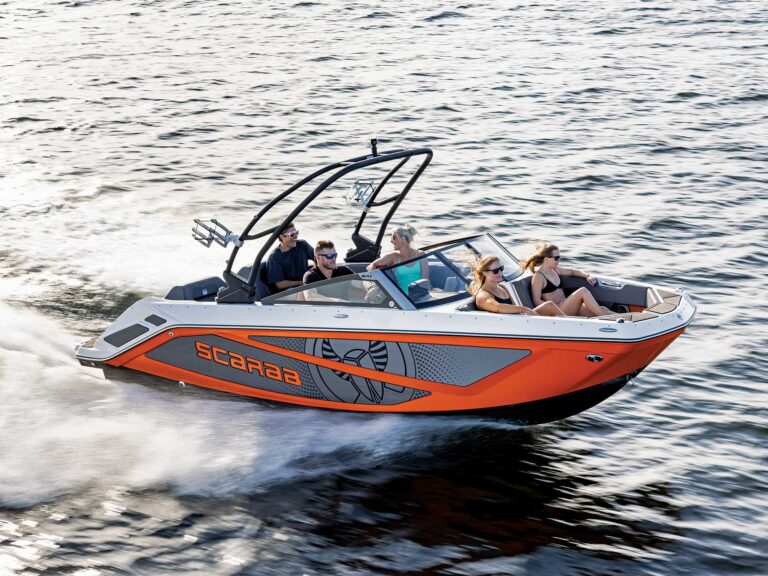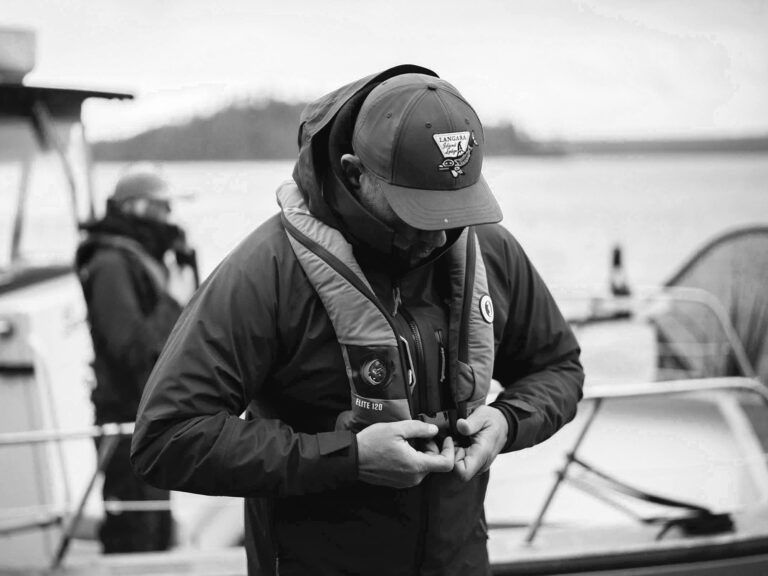
Tyson Garvin
NOTE: Before Fabio Buzzi set a new speed record for the Bermuda Challenge **last week, Chris Fertig and his throttleman Tyson Garvin **had established a new benchmark in August, in a diesel powered boat no less. This article documents Garvin’s stellar job as a throttleman in that pursuit.
Less than 30 minutes into their attempt to break the record for the Boating magazine Bermuda Challenge, Chris Fertig and Tyson Garvin found themselves floating with no battery power and a small fire. Garvin, the throttleman, appraised the situation, put out the fire and got the power back on. It was the probability for an occurrence like this one that had prompted Fertig, the owner and driver of the 37’ Statement powered by MerCruiser Diesel TDI engines and Bravo Three drives, to ask Garvin to be on board for the run.
“He found out I’m a pretty good guy to have with you because I know how to fix a lot of stuff,” said 36-year-old Garvin, who hails from Joplin, Mo., and has operated boats since he was 8 years old. When he was 16, Garvin had his own 115-mph catamaran. He currently is the president of Apex Manufacturing & Design which machines parts for aircraft and other industries. He’s owned a performance engine shop and designed his own rotary engine (see www.12rotar.com), built one-off boats and installed custom stereos in cars that hold numerous awards for loudest sound systems in national competitions. In short, the soft-spoken Garvin is a mechanical wizard you want around when you’re attempting to cross 760 miles of open ocean.
The team lost 28 minutes dealing with the situation, but turning back was not an option. “We were there to set a record and if that boat could continue to go forward, we were going to keep going until it couldn’t go forward anymore,” said Garvin. In the end, the team established a new record of 21 hours, 39 minutes, beating the old mark by less than an hour.

Before the attempt Garvin and Fertig had printed out a chart with the times, distances and fuel consumption numbers they would need to meet to break the record. Every hour they pulled out the chart to check their status.
Even with all that preparation, they still had to contend with conditions that only come in the open ocean. “It was rough enough that if you weren’t going for the record you would have stopped,” said Garvin. “A few times, it was smooth enough that you could sit down for a little bit and hold on, but most of the time, we had to stand.”
He said that after the run, he had bruises on the bottom of his throttling wrist and at one point he thought he had broken it. The added sensitivity of the fly-by-wire throttles also added to the throttling challenge for Garvin. When the conditions were calm enough, he actually realized it was good to duct-tape the throttles wide open. Then he could use the tension created by the tape to pull back slightly when the props left the water and the engine revs started to climb.
When the team had 386 miles to go to Kitchen Point off the Bermuda coast, Garvin said he thought the record was attainable, but he and Fertig never got too confident. “We didn’t really think we had the record until we were about a mile away,” he recalled. And if another problem arose, you can bet Garvin would have found a way to fix it.

